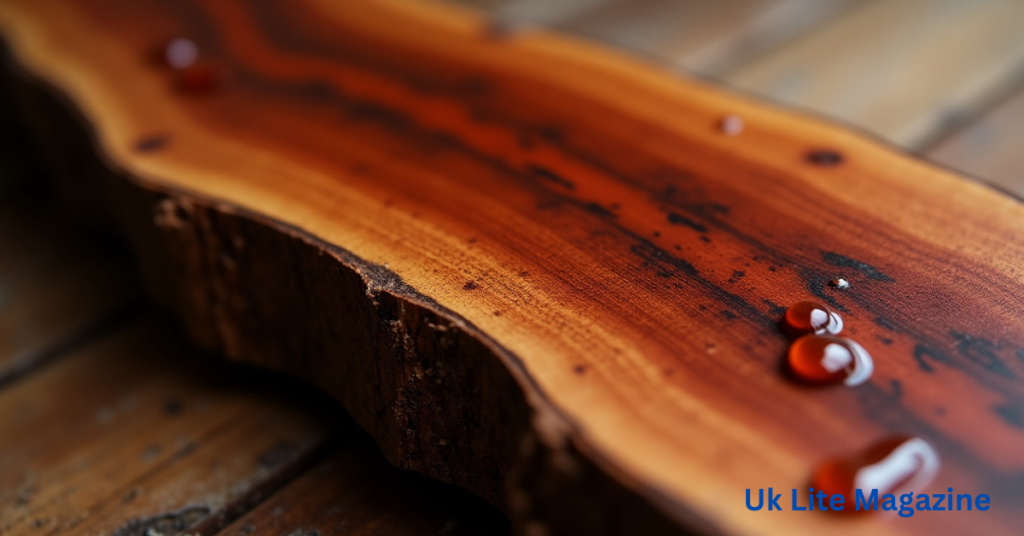Cocobolo wood is a highly sought-after exotic hardwood known for its stunning colors, durability, and fine grain. Due to its rarity and high price, many fake or misrepresented wood types are sold as cocobolo. If you’re looking to purchase genuine cocobolo wood, this guide will help you identify its key characteristics, differentiate it from imitations, and make informed buying decisions.
What Is Cocobolo Wood?
Cocobolo wood comes from the Dalbergia retusa tree, primarily found in Central America, particularly in Mexico, Nicaragua, Costa Rica, and Panama. It is part of the rosewood family, known for its rich hues and natural oils that make it resistant to moisture and decay.
Key Properties of Cocobolo Wood
| Property | Details |
|---|---|
| Color | Ranges from orange, red, and brown to purple with darker streaks |
| Grain | Usually straight, sometimes interlocked or wavy |
| Texture | Fine and smooth, with a natural luster |
| Weight | Very dense and heavy compared to regular hardwoods |
| Hardness | Extremely hard (Janka Hardness: 2,960 lbf) |
| Scent | Has a distinct spicy or floral aroma when freshly cut |
| Oil Content | High natural oil content, making it resistant to moisture |
How to Identify Genuine Cocobolo Wood
1. Check the Color Variations
Cocobolo wood exhibits a striking range of colors, from deep reds and oranges to dark purples and browns. Over time, exposure to light and air can cause it to darken. If a piece of wood appears too uniform or lacks depth in color, it might be an imitation.
2. Examine the Grain Pattern
The grain of cocobolo is typically straight but can be interlocked or wavy. It often has dark streaks running through the lighter base color. Fake versions may have unnatural or overly consistent patterns.
3. Feel the Texture
Genuine cocobolo wood has a fine, smooth texture with a slight natural luster due to its high oil content. If the surface feels overly polished or lacks any sheen, it might not be real cocobolo.
4. Test the Density and Weight
Cocobolo is significantly heavier than most woods. If the wood feels too light, it is likely not real cocobolo. You can compare it to known hardwoods to get a sense of its density.
5. Check for Natural Oils
One of the most distinctive characteristics of cocobolo is its high oil content. Rubbing the wood with your hands should leave a slight residue, and water should bead up on its surface rather than soak in immediately.
6. Smell the Wood
Freshly cut cocobolo emits a strong, pleasant fragrance that is often described as spicy or floral. If the wood lacks a scent or has an artificial smell, it may not be authentic.
7. Perform a Water Test
Due to its high oil content, genuine cocobolo does not absorb water easily. Place a few drops of water on the wood’s surface. If it absorbs quickly, it may not be authentic.
8. Verify the Source and Documentation
Since cocobolo is a protected species, reputable sellers should provide documentation verifying its authenticity and sustainable sourcing. Always ask for origin details and certification when purchasing.
Common Imitations of Cocobolo Wood
| Wood Type | How It Differs from Cocobolo |
| Bubinga | Similar color but lacks natural oil content and is less dense |
| Padauk | More orange in tone and lacks dark streaks |
| Rosewood Variants | Lighter in weight, less oily, and different grain patterns |
| Dyed Hardwoods | Artificial colors and uniform patterns |
Conclusion
Identifying genuine cocobolo wood requires attention to detail, from its vibrant color variations and distinct grain patterns to its weight, oil content, and scent. By using the tips in this guide and purchasing from reputable suppliers, you can ensure you get authentic cocobolo wood for your projects. Always verify the source and be cautious of imitations to make an informed purchase.
Frequently Asked Questions (FAQs)
1. Why is cocobolo wood so expensive?
Cocobolo is rare, difficult to harvest, and protected under CITES regulations, making it costly.
2. Can cocobolo wood change color over time?
Yes, due to oxidation and exposure to light, cocobolo wood darkens over time, enhancing its richness.
3. Is cocobolo wood legal to buy?
Yes, but due to its endangered status, it must be sourced from certified suppliers to ensure sustainability.
4. Does cocobolo wood cause allergic reactions?
Some people may experience skin irritation or respiratory issues due to its natural oils, so wearing protective gear when working with it is recommended.
5. What is cocobolo wood commonly used for?
It is popular in making high-end furniture, musical instruments, knife handles, and gun grips due to its durability and beauty.

